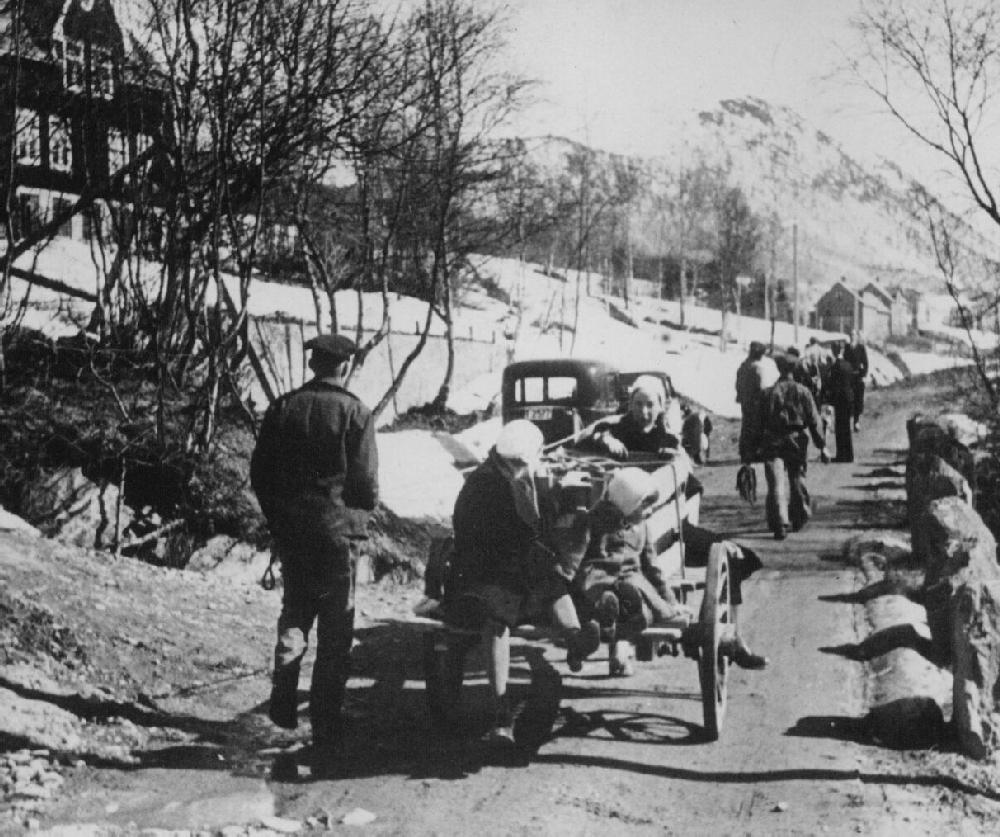
World War II Norway: Refugees Escaping to Sweden

Figure 1.--Here Norwegians are escaping to Sedeb upon hearing od the German invasion (April 1940) ans before the Germams could secure the border with Sweden. Here it was possible for the whole family to escape, including children and the elderly. Once the roads were closed off, only healty teenagers and adults could make the demanding terk over the often smow-covered countryside..
|
|
Geography for the most part meant that Norwegians who wanted to escape the Germans had to get to Sweden. There was a border with Finland in the north, but the population there was sparse. Abd as the war proftrssed the relativeky narrow Finnish-Norwgian border became a battlefront. There was also a North Sea coast, but this required an ocean voyage over pitentially rough seas and the Germans soon established contrils over sturdy boats. At the beginning of the German invasion and throughout the War, Norwegians were able to cross the border into Sweden if they could get ro it. The Swedes did not turn refugees back. It was easy to get to the border at first as it took a iittle time for the Germans to seize contril abd security the notder crossings. Once this was done crissing vecame more difficult. After the initial surge, this generally involved taking trains and busses to towns close to the border and then crossing the actual border surepticiously. Norway and Sweden have a very long bordr and would have taken a huge German effort to seal off that borfder. Rail and road crossinf could be secured, but not the cpuntryside. There were two primary ways of reaching Sweden. Most refugees walked across the border, sometimes on skis when there was snow. The alternative route available to people in the south was to row across the fjord between southern Norway and Sweden. The long border with Sweden was so extensive that even the substantial German occupation force could not seal off. Most Norwegians, however, lived in the south so this is where most of the crossings took place and where the Germans comcentrated the border patrols, but this was a virtually impossible task given the length of the border and Sweden's refusal to return the refugees. Norewgian living along the border helped the refugees evade the German patrols and became known as 'border pilots'. Crossinfgs over the countryside, however, required healthy teenagers and adults. Family crossings with chuldren and the eldrly were much more difficult.
CIH -- WW II

Navigate the CIH World War II Section:
[Return to Main World War II Norwegian refugee in Sweden page ]
[Return to Main World War II Swedish refugee page]
[Return to
[Return to Main World War II Norwegian page ]
[Return to Main World War II country page ]
[Return to Main World War II displaced children page]
[About Us]
[Aftermath]
[Biographies]
[Campaigns]
[Children]
[Countries]
[Deciding factors]
[Diplomacy]
[Geo-political crisis]
[Economics]
[Home front]
[Intelligence]
[POWs]
[Resistance]
[Race]
[Refugees]
[Technology]
[Totalitarian powers]
[Bibliographies]
[Contributions]
[FAQs]
[Images]
[Links]
[Registration]
[Tools]
[Return to Main World War II page]
[Return to Main war essay page]
[Return to CIH Home page]
Created: 8:19 PM 3/10/2020
Last updated: 8:19 PM 3/10/2020



